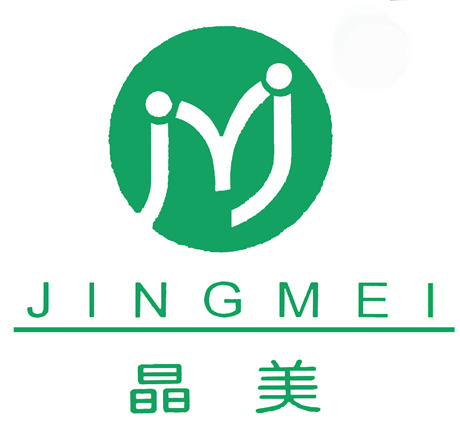NEWS
Laminated Glass: An Essential Architectural Material for Safety and Aesthetics
Published:
2023-08-27 11:20
Author:
Introduction:
Laminated glass is a crucial component in the realm of architectural and decorative materials, specifically in the processing of glass for construction purposes. This article sheds light on the role of laminated glass in ensuring safety, providing aesthetic appeal, and its significance in the field of architecture.
Enhanced Safety:
Laminated glass stands out with its exceptional safety features, making it a preferred choice for modern architectural projects. Its construction involves the bonding of two or more glass layers using a robust interlayer, usually made of polyvinyl butyral (PVB). In the event of impact, laminated glass minimizes the risk of shattering, as the interlayer holds the shattered pieces together. This characteristic makes it highly suitable for areas prone to earthquakes or heavy storms, as it prevents the glass from collapsing and causing harm to individuals nearby.
Soundproofing and UV Protection:
Apart from its safety attributes, laminated glass also offers excellent soundproofing capabilities. The interlayer acts as a sound barrier, reducing noise transmission from the external environment. This feature is advantageous for buildings located in busy urban areas or near airports, providing occupants with a peaceful and quiet atmosphere.
Additionally, laminated glass provides effective protection against harmful ultraviolet (UV) rays. The interlayer filters out a significant portion of UV radiation, safeguarding furniture, artwork, and interior spaces from fading or deterioration caused by prolonged exposure to sunlight. This feature is invaluable in preserving the aesthetic appeal and longevity of interior furnishings.
Design Flexibility and Versatility:
Architects and designers appreciate the design flexibility and versatility of laminated glass. It can be customized to meet specific aesthetic requirements, including colors, patterns, and textures. This allows for creative applications in both exterior and interior design, enabling architects to achieve their desired visual effects while maintaining safety standards.
Applications in Architecture:
Laminated glass finds extensive use in various architectural applications. It is commonly employed in the construction of skylights, canopies, and balustrades, offering transparency and safety simultaneously. Curtain walls, a popular architectural feature, often incorporate laminated glass due to its exceptional strength and resistance to weather conditions.
In addition, laminated glass is utilized in soundproof windows, providing a peaceful indoor environment by reducing noise pollution. Its ability to withstand forced entry makes it an ideal choice for security glazing applications, ensuring the protection of buildings against theft or vandalism.
Conclusion:
As a fundamental material in the realm of architecture and decorative materials, laminated glass plays a vital role in enhancing safety and aesthetics. Its ability to withstand impact, soundproofing qualities, UV protection, design flexibility, and versatility make it an indispensable choice for architects and designers worldwide. By incorporating laminated glass into their projects, professionals in the building and construction industry can achieve a harmonious blend of safety, style, and functionality.
Laminated glass is a crucial component in the realm of architectural and decorative materials, specifically in the processing of glass for construction purposes. This article sheds light on the role of laminated glass in ensuring safety, providing aesthetic appeal, and its significance in the field of architecture.
Enhanced Safety:
Laminated glass stands out with its exceptional safety features, making it a preferred choice for modern architectural projects. Its construction involves the bonding of two or more glass layers using a robust interlayer, usually made of polyvinyl butyral (PVB). In the event of impact, laminated glass minimizes the risk of shattering, as the interlayer holds the shattered pieces together. This characteristic makes it highly suitable for areas prone to earthquakes or heavy storms, as it prevents the glass from collapsing and causing harm to individuals nearby.
Soundproofing and UV Protection:
Apart from its safety attributes, laminated glass also offers excellent soundproofing capabilities. The interlayer acts as a sound barrier, reducing noise transmission from the external environment. This feature is advantageous for buildings located in busy urban areas or near airports, providing occupants with a peaceful and quiet atmosphere.
Additionally, laminated glass provides effective protection against harmful ultraviolet (UV) rays. The interlayer filters out a significant portion of UV radiation, safeguarding furniture, artwork, and interior spaces from fading or deterioration caused by prolonged exposure to sunlight. This feature is invaluable in preserving the aesthetic appeal and longevity of interior furnishings.
Design Flexibility and Versatility:
Architects and designers appreciate the design flexibility and versatility of laminated glass. It can be customized to meet specific aesthetic requirements, including colors, patterns, and textures. This allows for creative applications in both exterior and interior design, enabling architects to achieve their desired visual effects while maintaining safety standards.
Applications in Architecture:
Laminated glass finds extensive use in various architectural applications. It is commonly employed in the construction of skylights, canopies, and balustrades, offering transparency and safety simultaneously. Curtain walls, a popular architectural feature, often incorporate laminated glass due to its exceptional strength and resistance to weather conditions.
In addition, laminated glass is utilized in soundproof windows, providing a peaceful indoor environment by reducing noise pollution. Its ability to withstand forced entry makes it an ideal choice for security glazing applications, ensuring the protection of buildings against theft or vandalism.
Conclusion:
As a fundamental material in the realm of architecture and decorative materials, laminated glass plays a vital role in enhancing safety and aesthetics. Its ability to withstand impact, soundproofing qualities, UV protection, design flexibility, and versatility make it an indispensable choice for architects and designers worldwide. By incorporating laminated glass into their projects, professionals in the building and construction industry can achieve a harmonious blend of safety, style, and functionality.
Keywords:
laminated glass
Related News














